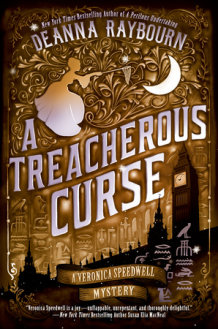http://www.signature-reads.com/2018/01/for-the-armchair-egyptologist/
Europe's Plunder: Notes on the History of Egyptology
By Deanna Raybourn

Photo via Wikimedia Commons
The 19th-century craze for Egyptology began, curiously enough, with Napoleon. When the French dictator launched his campaign to conquer Egypt in 1798, he commissioned French experts to make a thorough study, examining the land, its people, and its history. Under his direction they compiled the Description de l'Égypte, a lavish work that ran to almost forty volumes of exquisite artwork depicting animals and monuments that captured the imagination of western Europeans. Published over the course of two decades, the Description required the work of more than 160 scholars and scientists, fueling a passion for the land of the pharaohs.
Perhaps the greatest academic triumph of Napoleon's researchers was the eventual translation of the Rosetta Stone. Prior to this, hieroglyphics were undecipherable, the meanings of the symbols lost to time. After more than two decades of work, the stone eventually yielded its secrets thanks to philologist Jean-Francois Champollion.
Unfortunately, during the Egyptology fad that ensued, Europeans raced to plunder the country. Former circus strongman Giovanni Belzoni, a self-taught archaeologist, used dynamite to blow away the doors of tombs reluctant to reveal their treasures. Others followed, swarming through the traditional royal burial sites in the Valley of the Kings to plunder graves and topple obelisks to cart back to the capitals of Europe. Collectors vied to acquire the latest in art and artifacts, everything from game boards to canopic jars which once held the mummified organs of the dead. To set off their new treasures, they decorated their houses and theaters and dressed themselves in Egyptian motifs. Even Wedgwood offered a tea service to celebrate Nelson's victory during the Nile campaign—complete with crocodile finials on the teapot."Their ghoulish enthusiasm did not end with the printed word. Mummy unrollings became a fashionable entertainment."TWEET THIS QUOTE
The fervor for all things Egyptian waxed and waned during the 19th-century, but it never entirely faded. The advent of steam travel meant that new horizons were opened up to Europeans who had restricted themselves to Grand Tours of their own continent in previous centuries. As Victoria's reign stretched on, intrepid visitors clambered up pyramids and ventured up the Nile in search of adventure.
None were more intrepid or famous than the indefatigable novelist and traveler, Amelia B. Edwards. An Englishwoman abroad, Edwards wrote extensively of her experiences in A Thousand Miles Up the Nile, chronicling her travels as she sailed in a dahabiyeh south towards the Sudan. Even the Prince of Wales got in on the act, forming his own expedition in 1862—complete with traveling taxidermist—to journey up the Nile.
Always glimmering on the horizon was the hope of an undiscovered tomb, an intact burial from antiquity that would hold unimaginable treasures. As new finds were made in the Valley of the Kings, scholars realized how many tombs were yet potentially undiscovered, tantalizing the world with the possibility of gold and mummies and jewels. It was not until the early 20th century that such a find was made, but the possibility of it enchanted Victorians. They devoured travel memoirs, newspaper features, collections of letters, photographic essays—anything and everything on the subject of Egypt.
But their ghoulish enthusiasm did not end with the printed word. Mummy unrollings became a fashionable entertainment. Wealthy collectors purchased mummies that had been disturbed during the endless construction projects in 19th-century Egypt and imported them to Europe. (Egyptians themselves had been known to use the flammable, bitumen-covered mummies as fuel for their railway engines.) Gathering their friends and families, the collectors would make an evening's entertainment out of stripping the mummies of their wrappings. Enterprising showmen offered similar thrills to the general public, charging them for the price of admission.
Reporters launched careers covering the stories of professional rivalries, inventing lurid tales of ancient curses, while writers like Arthur Conan Doyle penned sensational stories of mummies to frighten and delight their readers. In her newest adventure, The Treacherous Curse, Veronica Speedwell is thrust into this heated atmosphere of greed, rivalry, and the shadowy unknown as she races to discover the truth behind a mummy's curse before it is too late.
-- Sent from my Linux system.

No comments:
Post a Comment